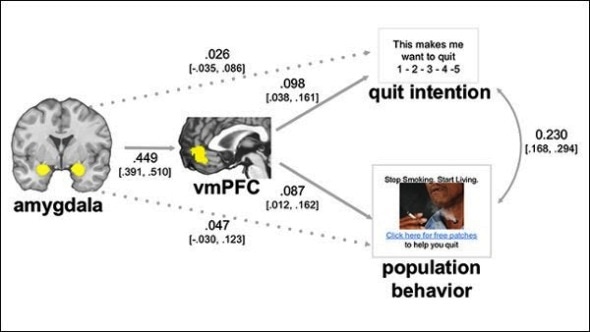
Neuroimaging predicts influence of anti-smoking media campaign
Neuroimaging data obtained from a small group of smokers predicts the influence of a large anti-smoking media campaign targeting likely smokers, shows a new study published in JNeurosci. This approach could help improve informational materials designed to change people’s attitudes and behaviors.

Bruce Dore, Emily Falk and colleagues identified a neural pathway between the amygdala — which was sensitive to the emotional content of the images — and the ventromedial prefrontal cortex that responded to graphic anti-smoking messages. A pattern of brain activity characteristic of emotional regulation predicted the extent to which smokers reported being motivated to quit. The images that smokers said made them want to quit were the same ones that encouraged likely smokers to click through for more information in a New York State Smokers’ Quit Line email campaign. Together these results suggest neuroimaging can be used to predict individual- and population-level responses to persuasive health messages.
Source:





















.png)












No hay comentarios:
Publicar un comentario